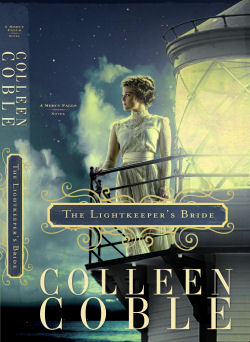|
Yeah,
yeah, yeah. I heard you
complaining about having to change your
novel. I’m here to change your mind. I felt the way you do once upon a
time. But that was before I realized what a blessing it is to have such
focus on my work. That was before I realized we authors are too close
to our work to see it clearly.
Here’s my process.
Revision letter
arrives.
1. Dance! Shout out whoo hoo. Do whatever it takes before you open it
to have a great attitude. The process is a matter of attitude.
If you are determined to make this a good experience, it will be much
easier. Tell yourself there will be great things in there to make your
book better.
2. Take down your defenses and realize that any criticism is meant to
help not hurt. Don’t make it personal.
3. Reinforcements have arrived! When I’m writing a book, I feel like a
draft horse pulling a heavy wagon up a mountain by myself. When I get
the revisions back, I’m suddenly assisted by another draft horse or
two, and we’re coasting down the mountain toward a charming town in the
distance. Allow yourself to brainstorm the suggestions and see the
possibilities.
The Good, the Bad, and
the Ugly: Open the e-mail and read.
1. The Good. A little bit of sugar makes the medicine go down. Read the
good things the editor says. Allow yourself to savor those, all the
while knowing the medicine is coming. Linger over those passages.
a. Here is one nugget I savored for The Lightkeeper’s Bride:
It’s been a long while since I
finished a subedit read and thought, “I don’t think there’s a whole lot
that needs to be done, here.” Wow.
2. The Bad: Now comes what didn’t work. Read through the entire list of
things that need to be shored up.
a. One item my editors said to change in The Lightkeeper’s
Bride meant some big changes, but they were right: Katie’s
father: consistent characterization. He’s bad, he’s good, he’s bad
again. Ami wonders if he shouldn’t die, given that happened in the last
book. That would open up a whole lot of other opportunities for
development—and impact on Katie.
3. The Ugly: Often after reading a revision letter, you feel
overwhelmed with all that needs to be done. But ugly as it looks, it’s
possible to do this work in much less time than you ever imagined.
Gear up for the Journey
1. Read the letter again. Even a third time. I always miss some things.
If you’re already excited about some changes, call your editor (or crit
partner) and talk them through. If you’re not quite there yet, sleep on
it. The next morning read the suggestions again and try to get excited.
Try not to look at how much there is to do, because it can be
overwhelming.
2. Call your editor if you haven’t already. Have the items up for
discussion flagged. Then settle in for work.
Eating the Elephant One Bite at
a Time: Break down your work into manageable pieces.
1. Print it out. Highlight important plot points that need to be
changed and things the editor says don’t make sense.
2. Make the small changes first. Erin usually has small inconsistencies
marked by page number. I fix those little things because they are
easier to find before I make major changes.
3. Tackle plot issues. I go back to my scene outline. Where can I drop
in another scene or expand a current one that will allow me to fix
those problems? Can I move a scene for more impact?
4. Layer in those character fixes: I use 3 x 5 cards and write down
character issues like Katie needs control: show. Or
Hates glasses—things
that can be easily dropped into existing scenes. Also, list scenes that
need to be changed to more reflect who the character is.
5. Theme issues: Where can I layer in more thematic punch?
Finishing What You Started
1. By now my printout is a mishmash of highlights, checkmarks, and
coffee stains. (Coffee is indispensable for editing!) Print it out
again and read it with a fresh eye. Did you miss anything that needs to
be fixed?
|
2.
The editor has given you her best shot. But this is your chance to
enhance your book even more. Often after we get those notes, we see the
book in a whole new way. Love that about editing! So I always reread my
character outlines. I learn about them thoroughly, even more through
the writing of the story. Has my character changed any in my mind? If
so, now is the time to enhance those changes with small tweaks in the
inner and outer dialogue.
•
Is that truly how the character would react?
• Am I making their emotions clear enough? Too clear?
• Is that really what the character would say?
• Am I hedging their true emotions because I don’t want readers to hate
them? (I’m often guilty of this one—I don’t let my characters get mad
enough or rude enough or jealous enough, etc.)
• Would my character really do that? If it’s unexpected, do I properly
explain it to my readers?
• Do I have too much back story? Not enough?
• Do all of my characters have their own unique motivations and
stories? Do I make them clear when needed?
• Is my main character compelling? Are secondary characters
interesting? Is the villain a true conflict?
• Are all my characters necessary? Can some be combined or cut?
• Do my characters propel the story forward with their actions and
words?
Things I focus on while line
editing:
• Showing not telling
• Varying description/improving it
• Ensuring my details are consistent throughout (i.e. character has
same eye color throughout story)
• Tightening chapters and making sure they break properly
• Changing repetitive words and actions (Eye rolls, sighing, and gasps
don’t pack a punch if they happen too often.)
It’s Over, Right?
1. You pressed SEND and the job is done, right? Um, wrong. There is
another set of edits, the line edits, to come. This is where the editor
actually changes things in your document. This is often
the hardest stage for writers. It can make them feel like they were
wrong to choose a certain word or a certain phrase. But this is where I
often learn the most. I see what commas Erin leaves in or adds or
removes. I see how she tightens the manuscript yet still maintains my
voice.
2. The manuscript comes with Track Changes on. You can reject or accept
any changes. And really, it’s okay to reject anything that doesn’t
work! But keep your prickles down. Don’t reject it just because the
editor dared to change your prose.
3. Talk through any issues you see right away. For example, editor used
italics or semicolons. I never use semicolons and use italics only for
emphasis. This is a hill to die on for me.


|









